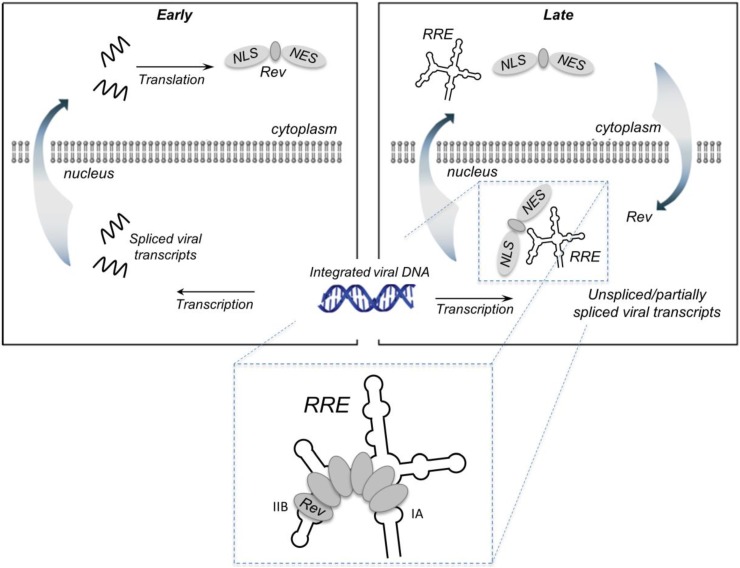Figure 1.
Rev-mediated nucleocytoplasmic transport of HIV-1 RNA containing the Rev RRE. RNA transport: In the early phase of the HIV life cycle, the genomic RNA transcript is completely spliced, generating RRE-free messages, which are transported to the cytoplasm via standard nuclear export pathways. One of these messages encodes Rev, which is imported into the nucleus via its nuclear localization sequence (NLS). The late phase of the viral life cycle is characterized by the expression of viral proteins encoded by the unspliced (9 kb) or partially spliced (4 kb) RRE-containing mRNAs. These large intron-containing RNAs are retained in the nucleus for splicing/degradation until a sufficient level of Rev accumulates, after which they are exported to the cytoplasm via a Rev-dependent export pathway. This involves assembly of the Rev-RRE complex and recruitment of host proteins CRM1 and Ran-GTP via the Rev nuclear export sequence (NES). Export of the Rev-RRE -CRM1/RanGTP complex to the cytoplasm provides mRNAs that are translated to produce the remaining viral proteins and full-length genomes that are packaged into the budding virion. Inset: Rev initially binds the IIB secondary structure motif, then cooperatively assembles along the RRE via a series of Rev-Rev and Rev-RNA interactions. Rev has also been reported to bind motif IA with high affinity.

